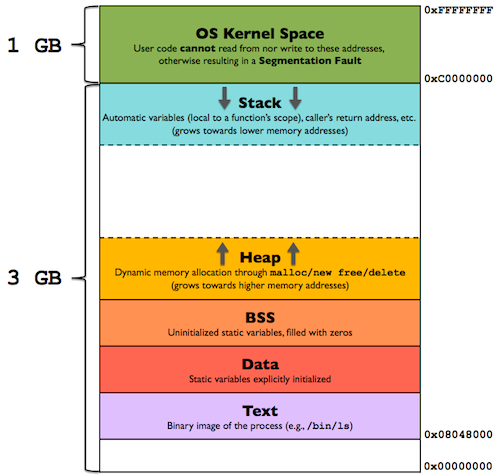Understanding Memory Allocation: Stack vs. Heap
Navigating Memory Management: A Comparative Exploration of Stack and Heap Allocation
When it comes to programming, one fundamental aspect that developers must grapple with is memory allocation. Memory allocation is the process of reserving and managing a computer's memory for various tasks. Two common methods for memory allocation in programming are stack and heap. In this article, we'll delve into the key differences between these two approaches and explore their respective advantages and drawbacks.
Below is a figure to give you an idea of how the memory layout looks like:
Lets have a look at both of these memories in detail.
Stack Memory:
Definition:
The stack is a region of a computer's memory that operates in a Last-In, First-Out (LIFO) manner. It is used to store local variables and function call information. The stack memory is managed automatically by the compiler, making it a straightforward and efficient way to allocate and deallocate memory.
Characteristics:
Automatic Management: Stack memory is managed automatically by the compiler. When a function is called, space is allocated on the stack for local variables, and this space is automatically released when the function exits.
Faster Access: Accessing data on the stack is faster than on the heap because it involves simple pointer manipulation.
Limitations:
Fixed Size: The size of the stack is typically fixed, and exceeding this limit can lead to a stack overflow. This limitation can be a challenge for applications requiring dynamic memory allocation.
Heap Memory:
Definition:
The heap is a region of a computer's memory used for dynamic memory allocation. Unlike the stack, the heap memory requires manual management by the programmer. It provides a more flexible and expansive memory space, allowing for the allocation of memory at runtime.
Characteristics:
Dynamic Allocation: Memory on the heap can be allocated and deallocated explicitly during the program's execution, providing flexibility in managing memory.
Variable Size: The heap allows for the allocation of variable-sized blocks of memory, making it suitable for applications with unpredictable memory requirements.
Limitations:
Manual Management: Heap memory requires manual management, and failure to deallocate memory properly can result in memory leaks or fragmentation.
Slower Access: Accessing data on the heap is generally slower than on the stack due to the need for explicit pointer manipulation.
This information indicates that stack is the ideal place for storing and managing local variables & function call information. On the other hand, heap is suitable for dynamic memory allocation and best for applications with varying memory requirements.
There is this one final piece of information I would like to share.
Heap memory is shared across all threads of a program, however each thread has its own separate call stack.
Hence, in scenarios where data needs to be kept private and isolated between threads, utilizing the stack can be a safer choice in a multithreaded program, such as a transaction handler. The stack's thread-specific nature helps prevent unintended interactions between threads, ensuring data integrity and contributing to a more robust and thread-safe design. It's important to balance this choice with an awareness of the stack's size limitations and automatic memory deallocation characteristics.


